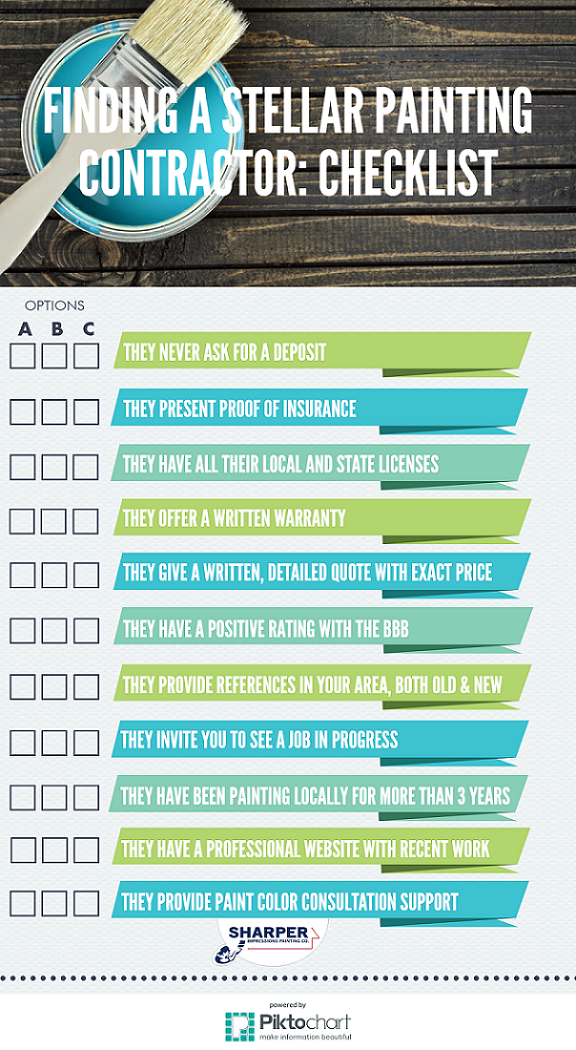How Paint Color Styles Can Impact Your Mood: Exploring The Psychology Behind Shade Choices
How Paint Color Styles Can Impact Your Mood: Exploring The Psychology Behind Shade Choices
Blog Article
Posted By-Dennis Gauthier
Understanding the psychology of shade surpasses simple appearances; it delves into the detailed interaction between hues and human emotions. The impact of paint choices on state of mind is a remarkable topic that clarifies how our surroundings can influence our emotional wellness. By exploring just how various colors evoke details feelings and responses, we uncover a powerful tool for forming the setting of our living and working spaces. The following time you get a paintbrush, consider the profound implications your shade option might have on your inner globe.
Shade Psychology Basics
Recognizing color psychology is crucial for understanding the effect of different colors on human feelings and habits. Color psychology is the research study of just how shades can affect individuals' perceptions, feelings, and activities.
Different shades can stimulate specific psychological feedbacks, causing differing results on state of mind and actions. Colors can be broadly categorized into cozy colors, such as red, orange, and yellow, and amazing colors, including blue, green, and purple. Cozy shades often tend to be connected with energy, warmth, and exhilaration.
On the other hand, awesome colors are typically connected to peace, leisure, and serenity. Comprehending these general organizations is crucial when thinking about the emotional effect of color selections in various setups.
Moreover, social and individual experiences can also play a substantial function in exactly how individuals regard colors. For instance, red may represent love and passion in one society, while it can stand for threat or caution in an additional.
Therefore, when selecting colors for an area, it is essential to think about the more comprehensive context and possible interpretations to produce the desired psychological ambience.
Impact of Warm Colors
Cozy shades, such as red, orange, and yellow, have an extensive effect on individuals' emotional actions and habits. These tones are typically connected with sensations of heat, energy, and convenience. Red, for example, is known to evoke strong emotions like enthusiasm, enjoyment, and even temper. Should You Paint Whole House One Color can boost heart rates and produce a feeling of urgency.
Orange is a shade that combines the energy of red and the joy of yellow, making it an inviting and sociable selection. Yellow, the shade of sunlight, is connected to sensations of pleasure, positive outlook, and creative thinking.
When used in interior areas, cozy shades can make an area feel comfortable and welcoming. They can promote discussion and develop a dynamic environment, making them ideal for social areas like living spaces or eating areas. Nonetheless, https://www.goodhousekeeping.com/home/renovation/tips/a32867/clean-lines-painters-tape/ to utilize cozy colors in small amounts, as they can additionally be frustrating if utilized excessively.
Impacts of Cool Tones
Great tones, such as blue, environment-friendly, and purple, are recognized for their calming and relaxing effects on people' feelings and emotional health.
Blue, commonly associated with tranquility and peacefulness, has actually been revealed to reduced blood pressure and heart rates, making it an optimal color option for areas where leisure is essential, like rooms or living spaces.
Green, similar to nature and revival, can stimulate feelings of equilibrium and consistency, promoting a sense of peace and restoration. This makes eco-friendly a prominent selection for office or areas where focus and concentration are necessary.
Purple, a blend of calming blue and invigorating red, can inspire imagination and self-contemplation while additionally promoting a tranquil setting.
These amazing tones are especially beneficial precede where stress relief and psychological clarity are desired, creating a peaceful atmosphere that motivates leisure and psychological wellness. By integrating trendy tones into interior design via paint choices, people can positively influence their mood and overall mindset.
Final thought
In conclusion, the psychology of shade plays a significant role in affecting one's mood and emotions.
By tactically selecting paint colors based upon warm or amazing tones, people can create environments that evoke specific sensations such as exhilaration, leisure, or harmony.
Recognizing the psychological actions related to different colors can help people boost their general well-being and mood in different rooms.
